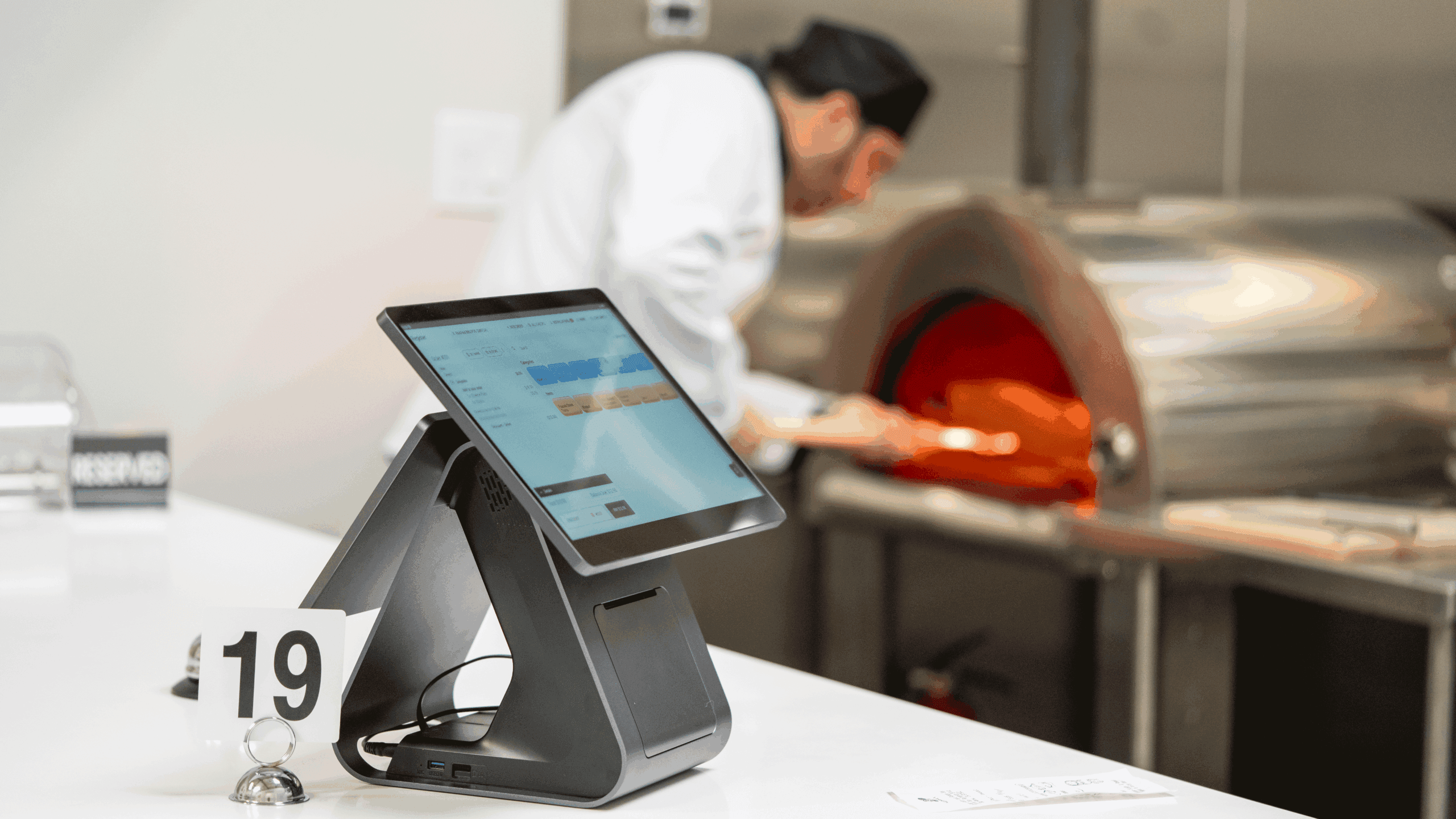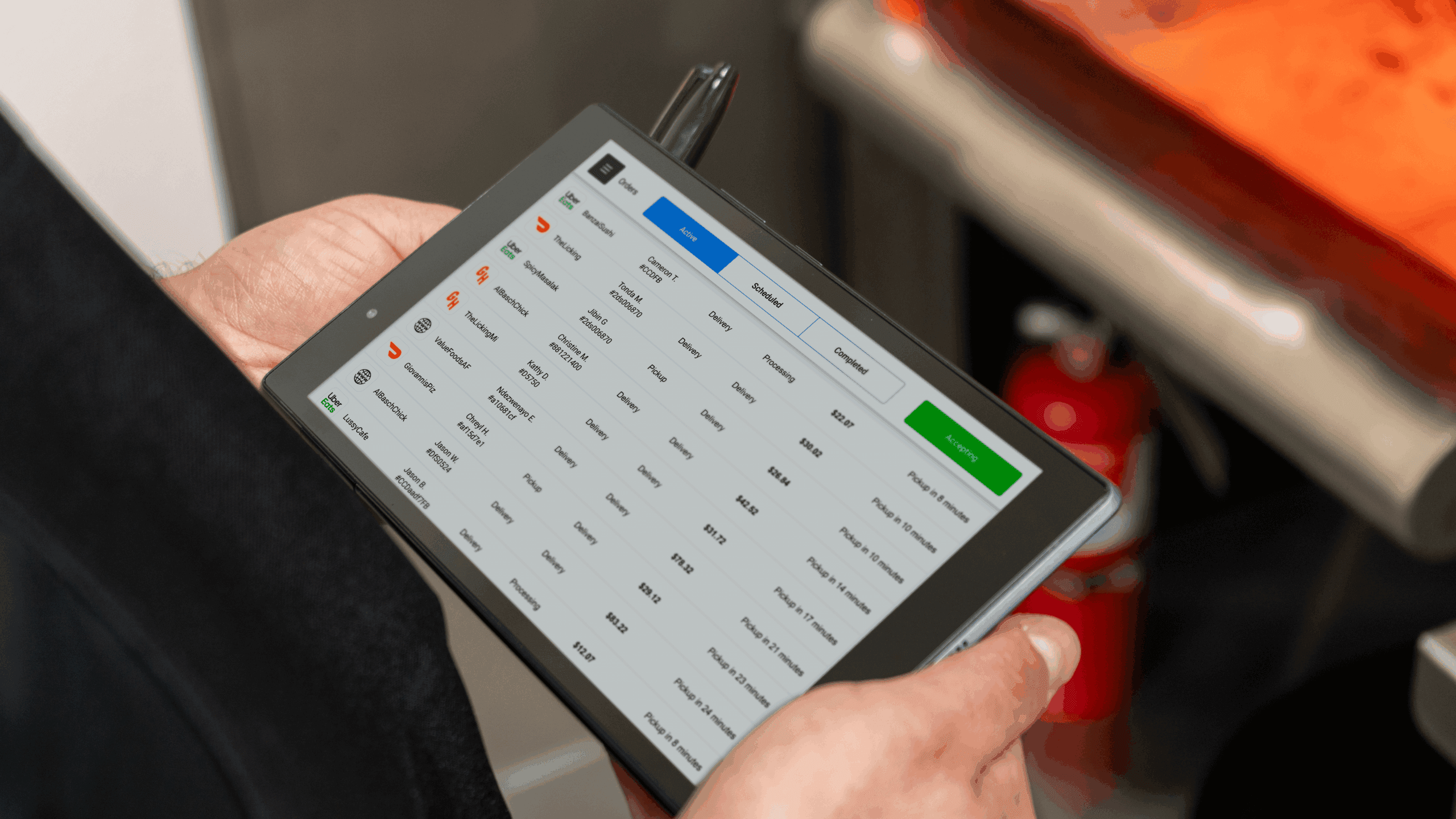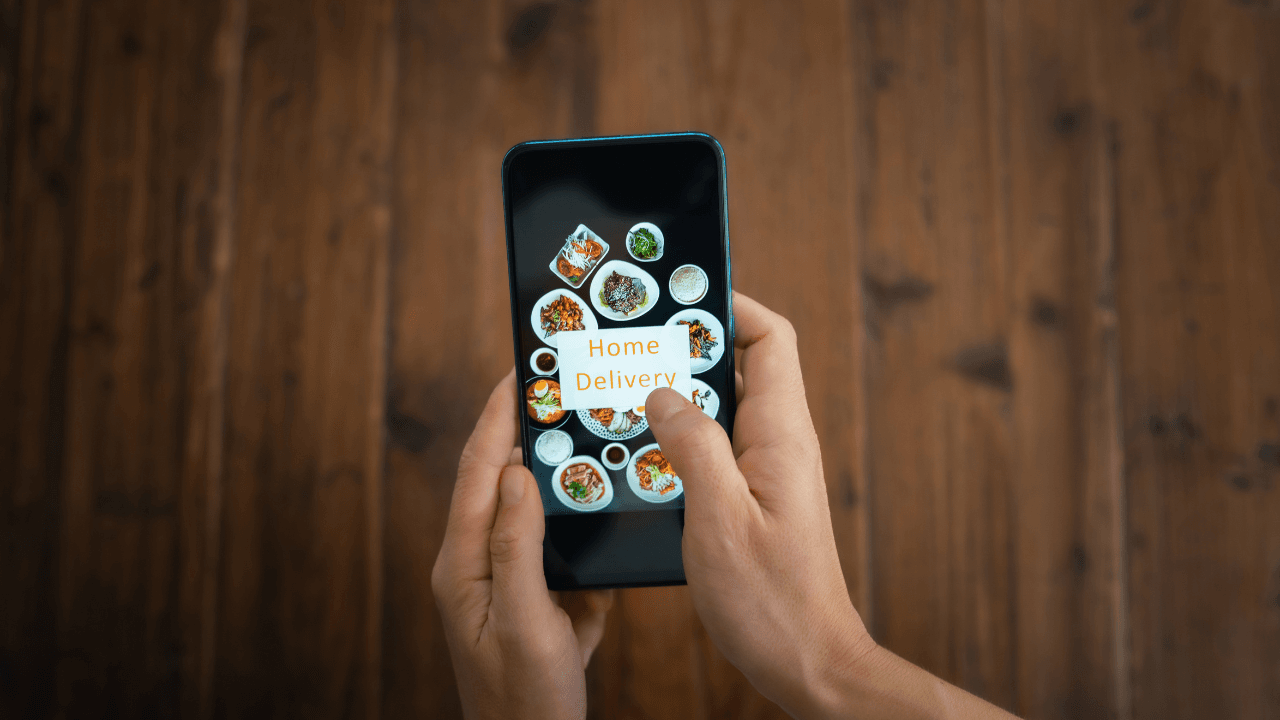- Why You Should Care About Emerging Restaurant Trends
- What are the Projected Marketing Strategies for Restaurants in 2024?
- How to Know Which Restaurant Marketing Strategy to Implement?
- Orders.co: Elevating Your Restaurant’s Future — Where Innovation Meets Culinary Excellence
Step into the gastronomic crystal ball, where the sizzle of innovation meets the artistry of flavor.
As we stand on the cusp of 2024, the culinary landscape is poised for a revolution, and your restaurant’s destiny is woven into emerging trends.
For instance, with more consumers caring about sustainability to create a better planet, restaurants are trying to meet these demands more than ever!
In this compelling exploration, we delve into how the restaurant trends of 2024 will not only tantalize taste buds but also reshape the essence of marketing strategies.
Get ready to navigate the future of dining, where every plate tells a story, and your brand’s narrative is written in the language of evolving tastes and experiential cravings.
Why You Should Care About Emerging Restaurant Trends
Stay Relevant and Appealing
Embracing emerging restaurant industry trends keeps your menu and overall dining experience current and appealing to a diverse and evolving customer base. Staying ahead ensures that your restaurant remains a destination for those seeking novel and exciting culinary experiences.
Meet Customer Expectations
Diners today are more adventurous and discerning than ever. Keeping an eye on emerging trends allows you to meet and exceed customer expectations, demonstrating that your establishment is in tune with evolving tastes and preferences.
Competitive Edge
In the saturated restaurant industry, a competitive edge is crucial. Being an early adopter of emerging trends sets your establishment apart from the competition, attracting customers seeking the latest and greatest dining experiences.
Adapt to Changing Consumer Habits
Consumer habits are dynamic and influenced by technology, health consciousness, and sustainability. Adapting to emerging trends allows your restaurant to align with changing consumer behaviors, ensuring your offerings remain in sync with the desires of your target audience.
Enhance Marketing Strategies
Incorporating popular trends into your marketing strategies provides fresh and compelling content. It allows you to leverage the popularity of these trends in your promotional efforts, attracting attention and engagement from existing and potential customers.
You can improve your marketing ROI over time by incorporating more AI into your strategies, including customer data collection through online ordering platforms.
Cultivate a Unique Brand Identity
Your restaurant can cultivate a unique brand identity by integrating emerging trends thoughtfully. Whether focusing on experiential dining or cutting-edge culinary techniques, aligning with specific trends contributes to a distinct and memorable brand image.
Appeal to Millennials and Gen Z
Younger generations, such as those belonging to Millennials and Gen Z, are influential trendsetters in the dining scene. Adapting to their preferences, such as a focus on authenticity, technology integration, and sustainability, ensures your restaurant remains attractive to these key demographics.
Maximize Social Media Impact
Many emerging trends have a strong presence on social media platforms. Since online ordering is also on the rise, by incorporating these trends into your offerings, you create photogenic, shareable moments that can amplify your restaurant’s visibility and impact on social media, reaching a broader audience.
Boost Sales and Revenue Streams
Offering trending dishes or experiences can lead to increased sales and revenue. As customers seek out the latest and most talked-about culinary experiences, aligning your offerings with emerging trends can drive foot traffic and repeat business.
Future-Proof Your Business
Anticipating and adapting to emerging trends positions your restaurant for long-term success. It demonstrates a proactive approach to the ever-changing landscape of the food industry, helping future-proof your business against shifts in consumer preferences and market dynamics.
What are the Projected Marketing Strategies for Restaurants in 2024?
As we gaze into the crystal ball of restaurant marketing, the landscape for 2024 unveils a dynamic tapestry of strategies designed to tantalize taste buds and captivate the ever-evolving consumer.
Here’s a glimpse of the projected marketing strategies that some restaurants are already implementing:
Experiential Dining Campaigns
Example: Chef’s Table at Brooklyn Fare in New York City offers a highly immersive and exclusive dining experience. With limited seating, a personalized menu, and an open kitchen concept, guests are taken on a culinary journey beyond traditional dining.
Hyper-Personalization through Technology Solutions
Example: Starbucks has successfully implemented hyper-personalization through its mobile app, offering customized recommendations based on previous orders, preferences, and location. This personalized approach enhances customer satisfaction and experience and encourages loyalty. You can opt for a similar strategy through third party delivery platforms.
Sustainable and Ethical Messaging
Example: Sweetgreen, a salad chain, emphasizes sustainability by sourcing local, organic ingredients. Their marketing campaigns highlight their commitment to reducing food waste and supporting local farmers, resonating with environmentally conscious consumers.
Virtual and Augmented Reality Experiences
Example: The Fat Duck, a Michelin-starred restaurant business in the UK, has experimented with virtual reality to enhance the dining experience. They collaborated with a tech company to create a virtual tour that complemented their multi-sensory tasting menu.
Influencer Collaborations
Example: McDonald’s collaborated with popular YouTuber Travis Scott, creating a limited-time “Travis Scott Meal.” The influencer-driven campaign generated significant buzz, increased foot traffic, and showcased the power of partnering with influencers to reach a broader audience.
Your Inbox, Your Rules!
Tailor your newsletter with the topics you're most interested in.
Interactive Social Media Campaigns:
Example: Wendy’s engages customers through interactive and witty Twitter campaigns. Their “Roast Me” challenge encouraged users to invite humorous roasts from the fast-food chain, sparking a playful and engaging conversation on social media.
Subscription-Based Dining Clubs/Loyalty Programs:
Example: The Black Sheep in Paris introduced a wine subscription club, offering members curated selections of unique and rare wines. Subscribers receive regular shipments, exclusive access to events, and discounts, creating a sense of community and loyalty.
QR Code Integration for Seamless Experiences
Example: Many restaurants, especially during the COVID-19 pandemic, have integrated QR codes for contactless menu access and ordering. For instance, Chili’s and other chain restaurants use QR codes for customers to view menus and place orders via their smartphones.
Nostalgia Marketing
Example: The Alinea Group’s “The Aviary” in Chicago often incorporates nostalgia into its cocktail menu, offering drinks inspired by childhood memories. This approach taps into customers’ emotional connection with familiar flavors and experiences.
Health and Wellness Promotion
Example: True Food Kitchen emphasizes health and wellness by offering a menu focused on nutrient-dense ingredients and anti-inflammatory foods. Their marketing highlights the nutritional benefits of each dish, catering to consumers with a focus on healthy eating.
These real-life examples illustrate how restaurants have already started to align with the projected marketing strategies for 2024, showcasing innovation, personalized experiences, and a keen awareness of current consumer trends.
How to Know Which Restaurant Marketing Strategy to Implement?
Selecting the right restaurant marketing strategy requires a thoughtful analysis of various factors, including your target audience, the unique aspects of your restaurant, current industry trends, and your business goals.
Here’s a step-by-step guide to help you determine which marketing strategies are the best fit for your restaurant:
Understand Your Target Audience:
- Identify the relevant demographics, preferences, and behaviors of your target customers.
- Consider factors like age, location, income level, and dining habits.
- Tailor your marketing strategies to resonate with the specific needs and interests of your audience.
Conduct a Competitor Analysis:
- Analyze the marketing strategies employed by successful competitors in your area.
- Identify gaps or areas where your restaurant can differentiate itself.
- Learn from both the successes and shortcomings of competitors to refine your approach.
Define Your Unique Selling Proposition (USP):
- Clearly articulate what sets your restaurant apart from others.
- Your USP should address what makes your cuisine, ambiance, or services distinctive.
- Use your USP as a foundation for crafting marketing messages that resonate with your target audience.
Set Clear Marketing Goals:
- Establish specific, measurable, achievable, relevant, and time-bound (SMART) marketing goals.
- Common goals include increasing foot traffic, boosting online orders, improving brand awareness, or launching a new menu item.
- Align your marketing strategies with these goals to ensure focused and effective efforts.
Consider Current Industry Trends:
- Stay informed about the latest trends in the restaurant industry.
- Evaluate whether incorporating emerging trends aligns with your brand and audience.
- Trends such as sustainability, technology integration, and experiential dining can influence marketing strategies.
Utilize a Mix of Marketing Channels:
- Diversify your marketing efforts across various channels, including social media, email marketing, influencer collaborations, and traditional advertising.
- Consider the preferences of your target audience and the channels where they are most active.
Assess Budget and Resources:
- Evaluate the financial resources available for marketing initiatives.
- Prioritize strategies that align with your budget and offer a favorable return on investment.
- Leverage cost-effective channels, such as social media and email marketing, to maximize reach.
Test and Measure:
- Implement strategies on a small scale or conduct pilot campaigns to test their effectiveness.
- Use analytics tools to measure key performance indicators (KPIs) such as customer engagement, conversion rates, and return on investment.
- Based on results, refine and optimize your marketing approach over time.
Seek Customer Feedback:
- Solicit feedback from existing customers through surveys, reviews, and social media interactions.
- Use customer insights to understand preferences, improvement areas, and marketing innovation opportunities.
Stay Agile and Adapt:
- The restaurant industry is dynamic, and consumer preferences can evolve.
- Be agile and adaptable to changes in the market, adjusting your marketing strategies as needed.
- Regularly reassess the effectiveness of your campaigns and make data-driven decisions.
By following these steps and maintaining a strategic and customer-centric approach, you can identify and implement restaurant marketing strategies that align with your brand, resonate with your audience, and contribute to the overall success of your establishment.
Orders.co: Elevating Your Restaurant’s Future — Where Innovation Meets Culinary Excellence
In the ever-evolving landscape of restaurant marketing, the key to success lies in understanding your own target audience, embracing your unique identity, and staying attuned to industry trends.
As we conclude this journey of strategic exploration, remember that the most effective marketing strategies are those tailored to your specific goals and the desires of your patrons.
Looking toward the future, embracing innovation is essential, and technology plays a pivotal role in enhancing the dining experience.
Orders.co stands as a beacon for restaurants ready to step into the future with confidence.
Through seamless QR code integration, Orders.co empowers your establishment with a modern touch, providing customers with a convenient way to access menus, place orders, and engage with your offerings.
With Orders.co, you’re not just adapting to change; you’re leading the charge into a future where technology and innovation redefine the dining experience!



